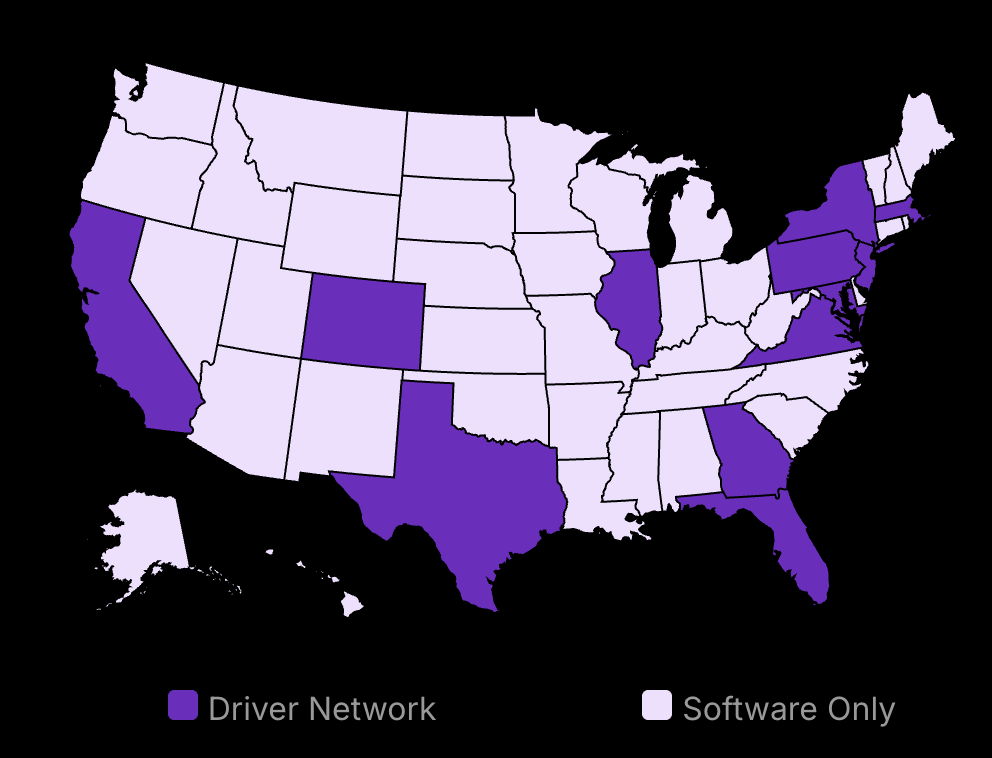In a world where small businesses often struggle with budget constraints, the idea of introducing employee wellness programs can seem daunting. But here’s the thing: cost-effective employee wellness program strategies for employers of small businesses are not only possible; they’re essential.
Your employees are your greatest asset, and caring for them doesn’t have to break the bank. This blog will share five actionable steps to create wellness programs that are affordable and impactful. To ensure your wellness programs include or exclude taxable benefits appropriately, consult this employer guide on managing benefits that could be considered taxable fringe benefits.
We’ll cover everything from setting goals, engaging employees, and making the most out of existing resources.
Get ready to transform your workplace into a healthier, happier environment without emptying your pockets.

Metrobi drivers are rated 4.97 out of 5
Trusted by local businesses for:
- Background-checked professionals
- Specialized in business deliveries
- Same drivers for consistency
- 4.97/5 average delivery rating
Affordable Wellness Strategies for Small Business Employers
Set Clear Wellness Goals
Setting objectives for workplace wellness initiatives and programs is crucial. This acts as the blueprint for your initiatives. Start by identifying specific goals, like reducing stress or improving physical health among employees.
Align Goals with Business Needs
Your comprehensive wellness program goals should support overall business goals. For instance, if your company culture values teamwork, focus on group wellness activities. This alignment helps gain management support and makes the program sustainable.
Assess Employee Needs and Interests
Understanding what employees want from a health and wellness program ensures higher engagement. Seek their input through surveys or casual meetings.
Conduct Surveys or Meetings
Conducting surveys to gather input is straightforward. Digital surveys are quick and anonymous, encouraging honest feedback. Questions about preferred activities or times can guide the planning process. Meetings can also offer informal settings where employees feel comfortable sharing thoughts.
Identify Common Wellness Interests
Once you have feedback, look for patterns. Are employees more interested in fitness challenges or mental physical health programs and support workshops? Use this data to prioritize initiatives that resonate.
Design a Simple Implementation Plan
Now, it’s time to figure out how to put the plan into motion. Keep it straightforward to start.
Start with Easily Manageable Initiatives
Pick activities that are simple and low-cost. Weekly walking groups or lunchtime yoga require minimal resources. They can be organized quickly yet offer noticeable benefits.
Allocate a Budget Mindful of Company Size
Your budget doesn’t have to be large to be effective. According to industry data, average corporate wellness program costs can vary from $150 to $600 per employee annually. Decide what fits your company size. Factor in costs for any resources needed, facilitators, or materials. Curious about the cost of health insurance for small businesses? Discover the affordable options available to keep your team healthy and secure.
Remember, setting clear goals, aligning them with business objectives, understanding employee needs, and designing a simple implementation plan all contribute to the success of affordable workplace wellness programs, a growing focus for health and wellness companies aiming to enhance employee well-being.
Low-Cost Corporate Employee Wellness Programs and Ideas That Work
Implement Walking or Fitness Challenges
Team exercise boosts both physical and mental health, and team spirit. Setting up challenges for walking or other fitness activities can help. Plus, they’re easy on the budget.
Plan the Challenge: Decide on the type of challenge. Walking is a great start. It’s low-impact and inclusive.
+ Set a timeframe, such as a month, for participants to track their progress. Teams looking to scale their fitness initiatives can explore how to make a fitness app tailored to their company’s specific wellness goals.Choose Platforms for Tracking:
Use step-counting apps like Fitbit or Strava.
To keep things connected, consider integrating with existing tools like Slack that offer bot options for tracking. Options exist that allow teams to see leaderboards or offer congratulatory messages.
Motivate and Engage Employees:
Announce the challenge with excitement. Use emails, posters, or team meetings.
Offer small prizes for goals achieved. These could be gift cards or company swag. Recognize efforts to increase motivation.
Include a weekly roundup of progress to keep the competitive spirit alive.
Review the Outcomes:
Collect feedback post-challenge. Find out what worked or needs tweaking.
Look for improvements in team communication or morale. Measure participation rates to fine-tune future challenges.
Encourage Healthy Eating
Good food choices lead to healthier employees. Here’s how to make healthy eating part of your company’s workplace culture.
Provide Nutritious Options:
Offer free or subsidized healthy snacks. Items like nuts, fruits, or yogurt create a positive impact.
Keep a steady supply. Set a snack budget, limiting spending while ensuring availability.
Promote Cooking and Recipes:
Share easy, balanced recipes through newsletters or a digital bulletin board.
Arrange online cooking sessions for groups. Use basic equipment to ensure accessibility.
Educate and Support Choices:
Organize occasional lunchtime talks with nutritionists or dietitians.
Distribute flyers with quick tips on balanced eating or suggest useful apps for meal planning.
Evaluate Impact:
Survey employee satisfaction with the options provided.
Track participation in cooking activities. Adjust offerings based on feedback.
Promote Mental Health and Relaxation
Mental health activities enhance focus and reduce workplace stress. Encourage employees to manage stress with structured efforts.
Organize Group Meditation Sessions:
Schedule sessions once a week. Collaborate with experienced teachers or use online platforms.
Host these in a quiet, inviting space within the office or a virtual setting for remote staff.
Share Stress-Relief Resources:
Provide resources like articles or podcasts focused on stress management. Use platforms everyone can access, like the company intranet software.
Feature quick, daily practices. Ideas include breathing exercises or brief guided meditations.
Encourage Open Conversations:
Create a supportive environment for discussing mental health without stigma. Many employees find valuable support through resources to chat with psychics online, providing an additional confidential outlet for maintaining emotional wellbeing.
Host weekly check-ins, encouraging sharing and community support.
Measure Participation and Feedback:
Use surveys to assess the program’s reception. Capture if and how stress levels change.
Use feedback to iterate on offerings, adapting to employees’ needs.
Following these steps can result in higher satisfaction and lower absenteeism. A 6% increase in overall job satisfaction, is tied to companies prioritizing wellness. Implementing these initiatives will build a healthier workforce and motivate employees without breaking the bank.
Budget-Friendly Workplace Wellness Programs and Health Solutions
Leverage Existing Resources
Collaborate with what you have. Use local gyms or wellness centers to boost staff wellness without draining your budget. Many gyms implementing wellness programs offer group rates that reduce costs and programs for small businesses and companies. Reach out to local studios or centers to explore these opportunities. For more details on how perks like gym memberships fit into fringe benefits subject to tax, check out our comprehensive guide on managing taxable fringe benefits adequately.
Collaborate with Local Gyms or Wellness Centers
Identify Facilities Nearby: Start with a list of gyms and wellness centers close to your office. Proximity increases participation as more employees are likely to attend.
Negotiate Group Rates: Contact each facility to ask about corporate discounts or group rates. Mention the number of employees and the frequency of visits.
Promote the Partnership: Once you finalize the deal, make sure employees know about it. Use emails and office notice boards to spread the word.
Use Community Parks for Outdoor Activities
Scout Local Parks: Find nearby parks suitable for activities like yoga or walking. Look for parks offering ample space and facilities such as benches or trails.
Schedule Regular Sessions: Plan weekly or monthly sessions around favorable weather conditions. Early mornings or late afternoons often work well.
Engage an Instructor: Consider hiring a yoga or fitness instructor who can conduct classes. This can be arranged as a one-time event or monthly, depending on interest.
Partner with Healthcare Providers
Work with healthcare professionals. This can include engaging with doctors or specialists to offer services at better rates and lower healthcare costs.
Seek Discounts for Health Checks or Wellness Seminars
Contact Local Clinics: Reach out to local healthcare providers about discount programs for group health checks. A clinic may provide reduced fees if a certain number of employees participate.
Set Up Seminars: Schedule seminars focusing on lifestyle, nutrition, stress management, or specific health concerns. This reflects an interest in employee well-being.
Advertise the Benefits: Share the perks of these seminars and health checks through your internal communication channels. Highlight specific health benefits.
Invite Experts for Health-Related Talks
Identify Experts in Key Areas: Look for professionals who can address topics like mental health, physical fitness, or dietary habits. Ensure they have relevant experience and credentials.
Arrange Speaking Sessions: Organize sessions physically at the office or virtually. Set these talks during lunch breaks as ‘lunch and learn’ events.
Facilitate Interactive Q&A: Inform potential attendees about the opportunity to engage directly with experts. Encourage questions and discussions.
Monitor and Adjust Programs
Keep the programs dynamic. Use feedback to ensure programs remain relevant and beneficial.
Regular Feedback to Refine Programs
Seek Continuous Feedback: Use surveys or informal meetings to gather insights about current wellness activities. Develop simple digital surveys to reduce response times.
Track Participation and Satisfaction: Monitor how many employees are participating, and gauge their satisfaction levels. Address any dissatisfaction promptly.
Implement Changes Based on Feedback: Make necessary changes based on employee feedback, whether it’s modifying existing programs or introducing new ideas.
Use Metrics to Assess Program Impact
Collect Relevant Data: Gather data on various parameters such as health improvements, participation rates, and employee contentment through surveys and anecdotal evidence.
Compare Against Benchmarks: Use industry benchmarks for employee wellness to determine program effectiveness.
Report Findings to Stakeholders: Regularly update management and employees on the program’s success. Transparently communicating results can drive increased participation.
Research shows that engaged employees are healthier. Actively disengaged employees have 2.17 unhealthy days per month, compared to 1.25 unhealthy days for those who are engaged. Monitoring and adjusting your programs can help in maintaining engagement levels, and improving employee health.
Advanced Tips for Small Business Wellness Program Tips
Flexible wellness activities enhance employee engagement.
Avoid complexity to maintain active participation.
Open communication ensures the program remains effective.
Incorporate Flexibility and Inclusivity
Creating a wellness program that embraces flexibility and inclusivity is crucial for small businesses. These same financial and small business wellness programs can be as diverse as the people they serve.
Tailor Activities for Diverse Interests
Identify Interest Areas: Begin by evaluating employee interests. Conduct a survey. Ask what activities they would find valuable. Include options like yoga, fitness classes, and workshops on stress management.
Create Group Categories: Group employees based on shared interests. This connects employees who might not usually interact, fostering a sense of community.
Vary Offerings: Develop a schedule of rotating activities. This ensures that all interests are addressed and keeps the program fresh. Use online calendars visible to all employees.
Promote Engagement: Use bulletin boards, emails, and company meetings to promote upcoming activities. Highlight benefits like stress reduction and increased productivity. This draws more employees in.
Allow Employees to Choose Participation Level
Offer Multiple Formats: Present activities in different formats, such as in-person sessions, videos, or online tutorials. This allows flexibility in how employees choose to engage.
Encourage Voluntary Involvement: Employees should feel free to opt in or out. Avoid mandatory participation to maintain enthusiasm and authenticity.
Provide Resources for Home: Extend the program with online resources or apps. Employees can then participate outside of work hours or in a comfortable environment.
Regularly Gather Feedback: Check in with employees about their experiences. Use feedback to adjust offerings. Tools like Google Forms or SurveyMonkey are efficient for gathering input.
Common Pitfalls and How to Avoid Them
Identifying common pitfalls beforehand helps to ensure a successful workplace wellness program. Avoiding these errors will lead to a successful wellness program and higher employee satisfaction and engagement.
Avoid Overly Complex Programs
Keep It Simple: Begin with straightforward activities that require minimal setup. Walking groups or simple yoga sessions are effective and easy to manage.
Set Clear Objectives: Define simple, clear objectives. Explain what each activity aims to achieve, like improved morale or increased physical health.
Monitor Complexity: Review activities monthly. Remove or simplify anything that seems to be causing confusion or lower participation.
Utilize Employee Leaders: Identify employees interested in leading sessions. This reduces program management burdens and enhances team spirit.
Keep Lines of Communication Open
Establish a Communication Channel: Set up a private channel on platforms like Slack or Microsoft Teams dedicated to wellness discussions.
Solicit Continuous Feedback: Regularly ask for feedback both formally and informally. Use this data to refine program offerings and address concerns.
Transparent Decision-Making: When changes are made, explain the reasons. Transparency fosters trust, particularly when modifying or discontinuing certain activities.
Recognize and Respond to Input: Acknowledge suggestions from employees. Implement feasible ideas to show that employee input influences decision-making.
1 in 4 people are looking to quit their job, often citing their health risks and a lack of work-life balance. Implementing flexible and inclusive wellness programs could be pivotal in employee retention. Linking wellness programs with business outcomes can show that cessation programs have a direct impact on productivity, as seen with companies reporting a 25% productivity increase due to such initiatives. Explore how implementing engaging wellness benefits for employees can turn the tide on attrition and foster a vibrant, productive workplace culture.
By focusing their mental health resources on these advanced tips, small businesses can build meaningful, flexible, and effective health and wellness programs, that attract and retain talent while promoting well-being.
Ready to Make Wellness Programs Work?
We just walked through ways to easily set up affordable wellness programs. Keep it simple by setting clear goals, using existing resources, and listening to feedback. It’s not just about saving money; these programs can boost and improve employee health, morale, and productivity.
Start by picking one idea that fits your team. Whether it’s fitness, wellness challenges, or healthy eating plans, there’s something for everyone. Check with your team regularly and be open to making changes.
What wellness initiative will you start first? Remember, the success of wellness strategies for small business employers and owners of your workforce often reflects the effort put into their well-being.




























